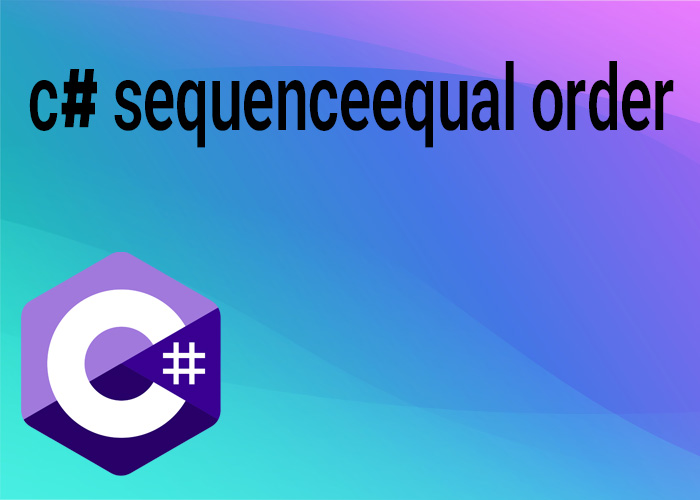Understanding the Order Sensitivity of SequenceEqual in C#
In C#, determining whether two sequences are equal in terms of both their contents and the order of those contents is a common task. The SequenceEqual method in the System.Linq namespace is specifically designed for this purpose. This article will delve into how SequenceEqual works, its sensitivity to the order of elements, and its usage in various programming scenarios.
What is SequenceEqual?
SequenceEqual is a LINQ method that determines whether two sequences are equal by comparing the elements pairwise. It returns true if the two sequences contain the same elements in the same order and quantity; otherwise, it returns false. This method is typically used to compare arrays, lists, or any other collections that implement IEnumerable<T>.
Syntax and Basic Usage
The basic syntax for SequenceEqual is as follows:
bool areEqual = firstSequence.SequenceEqual(secondSequence);
Here, firstSequence and secondSequence are collections that implement IEnumerable<T>.
Example: Comparing Two Lists
Consider two lists of integers:
using System;
using System.Collections.Generic;
using System.Linq;
public class Program
{
public static void Main()
{
List<int> list1 = new List<int> { 1, 2, 3, 4, 5 };
List<int> list2 = new List<int> { 1, 2, 3, 4, 5 };
List<int> list3 = new List<int> { 5, 4, 3, 2, 1 };
bool isEqual1 = list1.SequenceEqual(list2); // True
bool isEqual2 = list1.SequenceEqual(list3); // False
Console.WriteLine("List1 is equal to List2: " + isEqual1);
Console.WriteLine("List1 is equal to List3: " + isEqual2);
}
}
In this example:
- list1 and list2 are identical in terms of both order and contents, so SequenceEqual returns true.
- list1 and list3 contain the same elements, but the order is different, so SequenceEqual returns false.
Order Sensitivity
SequenceEqual is sensitive to the order of the elements in the sequences it compares. If two sequences contain the same elements but in a different order, SequenceEqual will return false. This behavior is crucial for scenarios where not only the presence of elements but also their order matters, such as in string comparison or when checking for palindrome sequences.
Use Cases and Considerations
- Testing: SequenceEqual can be particularly useful in unit testing where you need to assert that two sequences are exactly identical.
- Data Analysis: When analyzing data sequences where order plays a critical role, such as time series data, SequenceEqual helps ensure that data transformations or migrations preserve the sequence order.
- Performance: Keep in mind that SequenceEqual needs to check every element of the sequences, which can lead to performance implications for very large sequences.
Conclusion
The SequenceEqual method in C# is a powerful tool for comparing sequences not only for equality in terms of elements but also in terms of the order of those elements. Understanding how to use this method effectively can help ensure that your applications behave as expected when comparing data structures and can assist in implementing robust equality checks and validations in your code.





